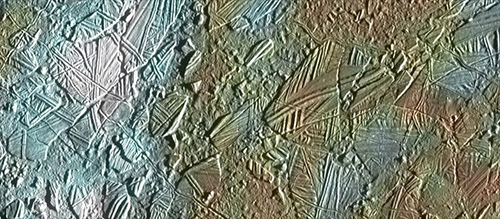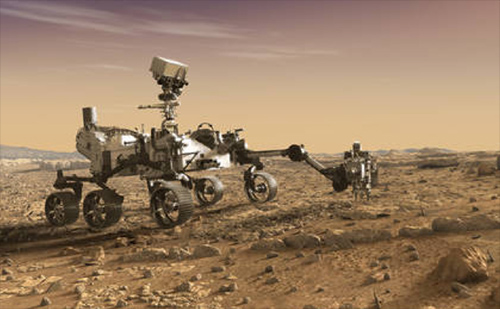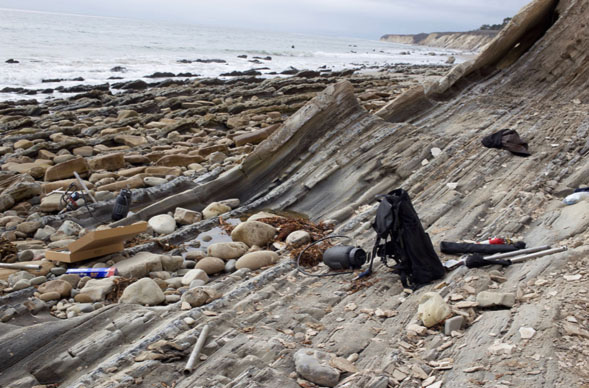NASA’s astrobiology program addresses three fundamental questions: How does life begin and evolve? Is there life beyond Earth and, if so, how can we detect it? What is the future of life on Earth and in the universe? Our researchers include experts in a wide range of fields to address these pivotal questions, providing a comprehensive, integrated understanding of biological, geological, chemical, planetary, and cosmic phenomena. A focus on ocean worlds – bodies with substantial, stable liquid on their surface or subsurface – requires additional expertise in fields such as oceanography and marine biology, and opens up the key places in our solar system and beyond where life is most likely to exist.
Research in the Astrobiology and Ocean Worlds area spans a wide range of topics, including:
- assessment of the habitability of the solar system’s planets and moons
- employment of morphology, chemistry, and mineralogy to assess biosignatures, in particular on Jupiter’s moon Europa, Saturn’s moons Enceladus and Titan, and Neptune’s moon Triton
- development of instruments and methodologies to detect extinct or extant life; finding correlations between carbon isotopic compositions and microstructures and/or taxonomy in microfossils
- assessment of the theories for life’s origins, including the alkaline hydrothermal vent model
- understanding the geological history of Mars as it relates to habitability
Additionally, researchers at JPL work on all aspects of future ocean worlds and astrobiology-based missions, from the development of long-term mission concepts to working on the instruments and methods that will perform the analysis of robotic platforms, and developing the hardware for future missions. Many working in this area are currently involved in a variety of missions and mission concepts, such as the Mars Science Laboratory (aka “Curiosity”), Mars 2020, Europa Clipper, and Dragonfly. Researchers are also heavily involved in planning future Mars and Outer Planets Missions.
Current Challenges
Astrobiology and ocean world research at the Jet Propulsion Laboratory is geared towards addressing the following challenges:
Searching for Organic Molecules on the Surface of Europa

The Europa Clipper Mission could confirm the existence and characterize the nature of water within or beneath the ice, and processes of surface-ice-ocean exchange; determine the distribution and chemistry of key compounds and the links to ocean composition; and work to understand the characteristics and formation of surface features, including sites of recent or current activity. The Mapping Imaging Spectrometer for Europa (MISE) could probe the composition of Europa, identifying and mapping the distributions of organics, salts, acid hydrates, water ice phases, and other materials to determine the habitability of Europa's ocean.
Finding Evidence of Extant or Extinct Life on Mars

The Mars 2020 mission plans to investigate an astrobiologically relevant ancient environment on Mars and explore its surface geological processes and history. The mission will perform an assessment of past habitability, the possibility of past life, and the potential for preservation of biosignatures within accessible geological materials. The rover will also cache sample containers along its route for potential future return. The Scanning Habitable Environments with Raman & Luminescence for Organics & Chemicals (SHERLOC) instrument is an arm-mounted, deep UV fluorescence/Raman spectrometer for detection of organic compounds and astrobiologically relevant minerals via in situ micro-mapping of suspected source terrains on the Martian surface. The Planetary Instrument for X-ray Lithochemistry (PIXL) instrument is a microfocus X-ray fluorescence spectrometer that rapidly measures elemental chemistry at sub-millimeter scales by focusing an X-ray beam to a tiny spot on the target rock or soil and analyzing the induced X-ray fluorescence. JPL scientists are developing the science requirements and I&T processes, and serving in science leadership roles for these instruments aboard the Mars 2020 rover. Work is also ongoing to support the science and operational activities of the Mars Science Laboratory (Curiosity) rover. JPL also supports the Astrobiogeochemistry Laboratory (abcLab), the goal of which is to study the formation, preservation and detection of morphologic, mineralogic, molecular, and isotopic signs of life and environment in geologic samples.
Searching for Biomolecules and Prebiotic Chemistry on Titan
The Dragonfly mission concept is a rotorcraft lander – proposed to NASA's New Frontiers Program – designed to take advantage of Titan's environment to sample materials and determine surface composition in different geologic settings. This revolutionary mission concept could explore diverse locations to characterize the habitability of Titan's environment, to investigate how far prebiotic chemistry has progressed, and even to search for chemical signatures that could indicate water-based and/or hydrocarbon-based life. JPL researchers are using their expertise in Titan chemistry, laboratory analogues, and biosignatures to provide input to the development of the mission, instrument, and science investigations, as well as science operations planning.
Exploring of Extreme Environments on Earth as Planetary Analogs

Many environments on Earth – in particular high-latitude, high-altitude, and arid regions – serve as analogs in simulating one or more properties similar to other places in the solar system. JPL scientists perform field work in various locations including the Mojave Desert, the San Francisco Volcanic Field in Arizona, Death Valley National Park, the Holuhraun lava field in Iceland, the Atacama Desert in Chile, Svalbard, Norway in the Arctic, and Russell Glacier and Summit Station in Greenland. Investigations in these areas range from basic science research (physical/chemical properties, assessment of microbial communities) to testing of instrument prototypes.